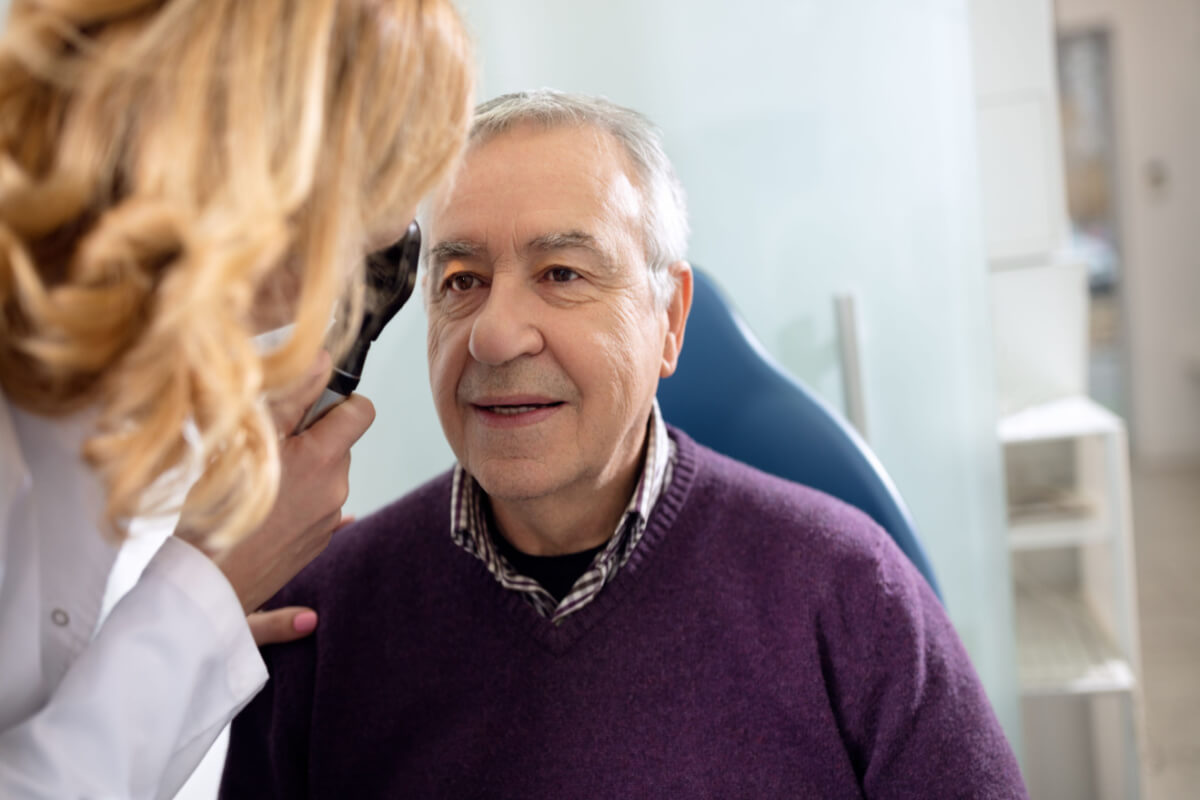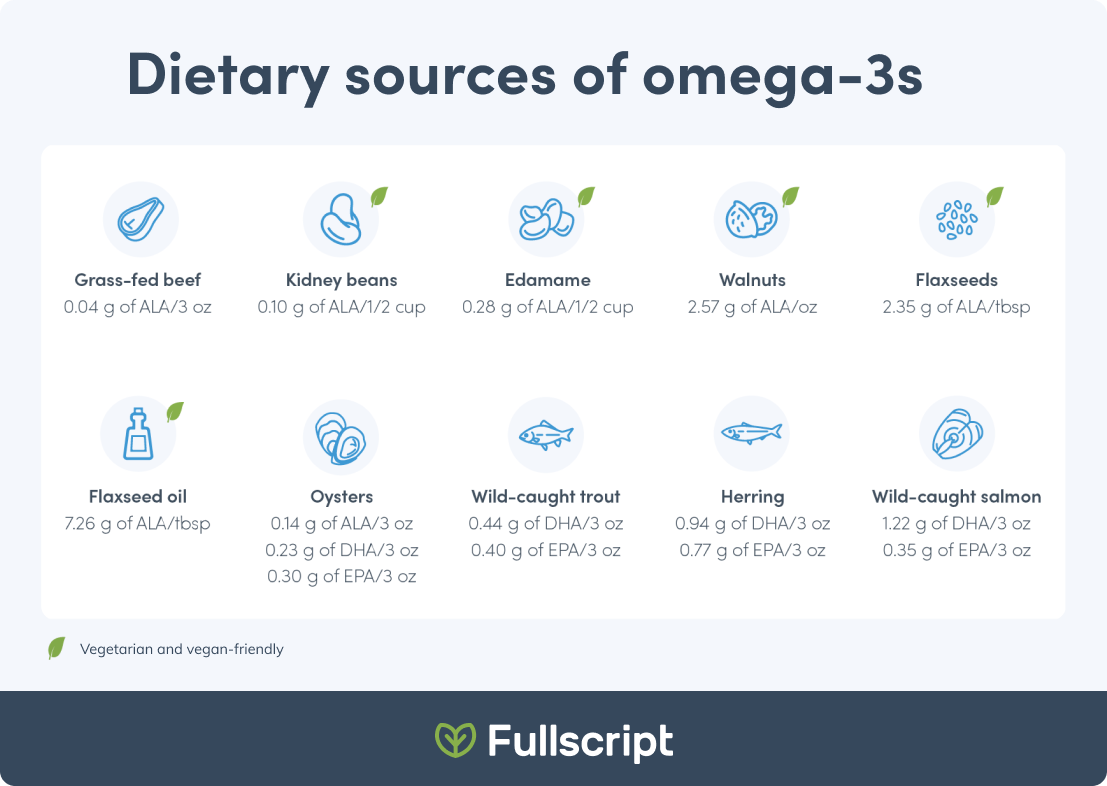Dry eye syndrome, or simply dry eye, affects nearly 16 million North Americans and is one of the most common reasons people visit the eye doctor (optometrist). (7)(15) A variety of factors can lead to dry eyes, including age and medication use. Fortunately, many natural remedies can be used to help keep dry eyes moist. (7)
Keep reading below to learn more about dry eye symptoms, causes, and natural dry eye treatment.
What is dry eye syndrome?
Dry eye occurs when the eye’s tear film isn’t functioning properly, making eyes drier than normal and more susceptible to damage. Tear film, a thin layer of tears, spreads across the surface of the eye each time you blink. This lubricates the eyes and washes away particles that can cause irritation or infections. (7)(17) When tear glands don’t produce enough tears or produce poor quality tears, it can lead to dry eyes. (13)(15) A healthy tear film is necessary for good vision and eye health. Depending on the underlying cause, dry eye can be acute (short-term) or chronic (long-term). (7)
Dry eye causes
Dry eye can affect anyone, but certain factors may increase your risk of getting dry eyes, including:
- Being 50 years old or older
- Certain medical conditions—mainly autoimmune and inflammatory disorders (e.g., arthritis, Sjögren syndrome)
- Certain medications (e.g., antihistamines, diuretics, NSAIDs, retinoids)
- Environmental factors (e.g., dry or windy weather, pollution)
- Exposure to irritants (e.g., chemical fumes, cigarette smoke)
- Having a medical history of eye surgery or eye damage
- Hormonal changes (e.g., menopause)
- Regular use of computer screens or other electronic screens
- Wearing contact lenses (7)(14)
Dry eye symptoms
Signs and symptoms of dry eye may include:
- Blurred vision
- Burning or stinging of the eyes
- Excessively watery or teary eyes
- Generalized eye pain
- Itchy or gritty-feeling eyes
- Redness of the eyes
- Sensitivity to light (15)
- Tired eyes or heavy eyelids (7)

5 natural remedies for dry eyes
Healthcare practitioners may use a variety of treatment strategies to reduce dry eye symptoms, including artificial tears (eye drops) or other lubricating gels, special contact lenses, or anti-inflammatory medications. Dry eye relief may also be supported with lifestyle changes, home remedies, and nutritional supplements. (9)(17)
1. Apply warm compresses
Applying a moist, warm compress to closed eyes one to four times a day for five to 15 minutes may help relieve dry eyes for some individuals. Warm compress therapy may increase tear film thickness, making eyes feel less dry. (6)(19) Gently massaging upper and lower eyelids after using a warm compress may further support its effects. (3)(25)
2. Consume more omega-3 fatty acids
Omega-3 fatty acids are an essential type of polyunsaturated fat with many health benefits. Omega-3 fatty acids are found in certain foods, including fatty fish and flax seeds, as well as dietary supplements, mainly fish oil supplements. Omega-3s have been shown to play a role in brain and cognitive health, cardiovascular health, eye health, and more. The National Academy of Medicine recommends that adult males should consume 1.6 g of omega-3 fatty acids per day, while females should aim for 1.1 g per day. (18)
Among many health benefits, consuming more omega-3s is associated with a lower risk of developing dry eye syndrome. (12) If you already have dry eyes, omega-3 fatty acids may help reduce symptoms. (1) Studies have shown that fish oil supplementation may be an effective way to improve Schirmer’s test results, a test commonly used by practitioners to assess eye tear moisture. (10)(18)(22) To learn more about fish oil supplementation, consult with your healthcare provider.

3. Drink plenty of water
Poor hydration status may be associated with the development of many conditions, including dry eye syndrome. (21)(24) Daily fluid needs vary among individuals, but dark-colored urine and a dry mouth are a couple of early signs that you may be dehydrated. (16) Drinking plain water is one of the easiest and healthiest ways to rehydrate. Consider the following tips to get more fluids:
- Add lemon or lime for taste.
- Carry a water bottle.
- Choose water over sugar-sweetened beverages.
- Eat more hydrating foods.
- Drink water whenever you feel thirsty. (5)

4. Get adequate sleep
Adequate, quality sleep is an important factor affecting health. Adults need about seven to nine hours of sleep per night, depending on age. (4) Poor sleep habits are associated with several health conditions, including depression, high blood pressure, and obesity. Lack of sleep may also influence dry eye, although the relationship between the two is not yet well understood. Half of patients with dry eye indicate that they have sleep issues often. (2)(11) Practicing good sleep hygiene, such as having a bedtime routine, is a good way to try and improve sleep. (8)
5. Modify your environment
Certain environment and lifestyle changes may help support healthy eyes. Try reducing screen time and avoiding dry and windy climates, such as the desert or places high in altitude. It’s also recommended to avoid or minimize cigarette use and being around secondhand smoke.
Try the following strategies to improve eye moisture by:
- Blinking often when using electronic screens (many people blink less when using these devices)
- Increasing air humidity with an electric humidifier or bowl of water in the room
- Limiting air movement by avoiding fans and pointing vents away from the face
- Wearing eye protection, such as sunglasses or a hat, when outdoors in windy or sunny weather (1)(7)
Dry eye precautions
While dry eye is overall fairly common and most people only experience discomfort, this condition can cause irritation and other complications, such as blepharitis (inflammation of the eyelids). In severe cases, parts of the eye may become severely inflamed and damaged, possibly leading to blindness. (7)(17)(23) Contact your healthcare provider as soon as possible if you experience itchy or crusty eyes, swollen eyelids, or any other severe dry eye symptoms.
The bottom line
Many factors can influence dry eye syndrome, including age, environment, and medication use. Dry eye is common but may lead to complications if left unmanaged. Fortunately, dry eye symptoms may be addressed using a variety of techniques. Natural dry eye treatment may include medicinal creams, essential fatty acids, and warm compresses. Contact your healthcare provider to learn more about natural dry eye treatment.
- American Optometric Association. (n.d.). Dry eye. https://www.aoa.org/healthy-eyes/eye-and-vision-conditions/dry-eye?sso=y
- Ayaki, M., Tsubota, K., Kawashima, M., Kishimoto, T., Mimura, M., & Negishi, K. (2018). Sleep disorders are a prevalent and serious comorbidity in dry eye. Investigative Ophthalmology & Visual Science, 59(14).
- Benitez-Del-Castillo, J. M. (2012). How to promote and preserve eyelid health. Clinical Ophthalmology, 6, 1689–1698.
- Centers for Disease Control and Prevention. (2017). How much sleep do I need? https://www.cdc.gov/sleep/data-research/facts-stats/adults-sleep-facts-and-stats.html
- Centers for Disease Control and Prevention. (2022). Water and healthier drinks. https://www.cdc.gov/healthy-weight-growth/water-healthy-drinks/index.html
- Geerling, G., Tauber, J., Baudouin, C., Goto, E., Matsumoto, Y., O’Brien, T., Rolando, M., … & Nichols, K. K. (2011). The international workshop on meibomian gland dysfunction: Report of the subcommittee on management and treatment of meibomian gland dysfunction. Investigative Ophthalmology & Visual Science, 52(4), 2050–2064.
- Golden, M. I., Meyer, J. J., & Patel, B. C. (2021). Dry eye syndrome. In StatPearls. StatPearls Publishing.
- Irish, L. A., Kline, C. E., Gunn, H. E., Buysse, D. J., & Hall, M. H. (2015). The role of sleep hygiene in promoting public health: A review of empirical evidence. Sleep Medicine Reviews, 22, 23–36.
- Javadi, M.-A., & Feizi, S. (2011). Dry eye syndrome. Journal of Ophthalmic & Vision Research, 6(3), 192–198.
- Liu, A., & Ji, J. (2014). Omega-3 essential fatty acids therapy for dry eye syndrome: A meta-analysis of randomized controlled studies. Medical Science Monitor: International Medical Journal of Experimental and Clinical Research, 20, 1583–1589.
- Magno, M. S., Utheim, T. P., Snieder, H., Hammond, C. J., & Vehof, J. (2021). The relationship between dry eye and sleep quality. The Ocular Surface, 20, 13–19.
- Miljanović, B., Trivedi, K. A., Dana, M. R., Gilbard, J. P., Buring, J. E., & Schaumberg, D. A. (2005). Relation between dietary n-3 and n-6 fatty acids and clinically diagnosed dry eye syndrome in women. The American Journal of Clinical Nutrition, 82(4), 887–893.
- National Eye Institute. (2019). How tears work. https://www.nei.nih.gov/learn-about-eye-health/healthy-vision/how-eyes-work/how-tears-work
- National Eye Institute. (2020). Causes of dry eye. https://www.nei.nih.gov/learn-about-eye-health/eye-conditions-and-diseases/dry-eye/causes-dry-eye
- National Eye Institute. (2022). Dry eye. https://www.nei.nih.gov/learn-about-eye-health/eye-conditions-and-diseases/dry-eye
- National Institutes of Health. (2019). Dehydration. MedlinePlus; National Library of Medicine. https://medlineplus.gov/dehydration.html
- National Institutes of Health. (2020). Dry eye syndrome. MedlinePlus. https://medlineplus.gov/ency/article/000426.htm
- National Institutes of Health. (2021). Omega-3 fatty acids. https://ods.od.nih.gov/factsheets/Omega3FattyAcids-HealthProfessional/
- Olson, M. C., Korb, D. R., & Greiner, J. V. (2003). Increase in tear film lipid layer thickness following treatment with warm compresses in patients with meibomian gland dysfunction. Eye & Contact Lens, 29(2), 96–99.
- Popkin, B. M., D’Anci, K. E., & Rosenberg, I. H. (2010). Water, hydration, and health. Nutrition Reviews, 68(8), 439–458.
- Sherwin, J. C., Kokavec, J., & Thornton, S. N. (2015). Hydration, fluid regulation and the eye: In health and disease. Clinical & Experimental Ophthalmology, 43(8), 749–764.
- Stevens, S. (2011). Schirmer’s test. Community Eye Health/International Center for Eye Health, 24(76), 45.
- Victoria Department of Health. (2021, April). Dry eye. Better Health Channel. https://www.betterhealth.vic.gov.au/health/conditionsandtreatments/dry-eye
- Walsh, N. P., Fortes, M. B., Raymond-Barker, P., Bishop, C., Owen, J., Tye, E., Esmaeelpour, M., … & Elghenzai, S. (2012). Is whole-body hydration an important consideration in dry eye? Investigative Ophthalmology & Visual Science, 53(10), 6622–6627.
- Wang, M. T. M., Feng, J., Wong, J., Turnbull, P. R., & Craig, J. P. (2019). Randomised trial of the clinical utility of an eyelid massage device for the management of meibomian gland dysfunction. Contact Lens & Anterior Eye: The Journal of the British Contact Lens Association, 42(6), 620–624.





